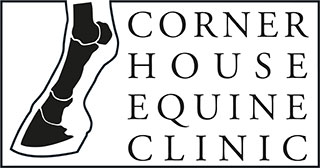As part of our Horse Health Programme (HHP), we are keen to protect your horse against worms. This includes more than just providing free wormers – the best way to keep horses safe, now and in the future, is to practice ‘targeted worming’. We explain what this means, why it is important, and how to provide safe, effective worm control year-round.
If you need more information, just contact your practice for expert advice. We can provide best practice, up-to‐date recommendations on any aspect of parasite control.
The most important parasites we need to address going into the Autumn/Winter are encysted small redworm larvae and, if necessary, tapeworm. Neither of these two parasites can be detected from a faecal worm egg count and encysted larvae are not killed by most wormers.
- Tapeworms can cause digestive disturbances, loss of condition and colic if a horse develops a large burden of worms.
- Small redworm larvae can encyst within your horse’s gut wall throughout the year -especially in the autumn and winter. If the larvae are not treated, a sudden mass emergence of larvae can occur in the spring, damaging the gut, which can cause diarrhoea and colic and may be fatal.
A targeted worming programme is vital for our horses, which is why it is recommended that you carry out a tapeworm saliva test to determine whether or not your horse needs to be treated for tapeworm. Check out top tips for worm control from Horse Health Programme.
Why is a targeted worming programme important?
- Because of the increasing resistance to the active ingredients used in wormers.
- So that we do not worm our horses when it is unnecessary to do so, which is better for our horses and decreases the risk of resistance.
- So that we can target the right worms at the right time of the year.
Encysted redworm larvae are treated using a wormer containing moxidectin, which also treats redworm and bots, which is why it’s not necessary to carry out a faecal worm egg count at this time of year. The wormer should be administered late in the grazing season (people often use the first frost as a reminder) so that reinfection on the pasture is minimised.
If the result of the tapeworm saliva test suggests that you need to treat your horse for tapeworm, it is possible for this to be done at the same time that your treat your horse for encysted redworm. This can be done using a wormer containing both moxidectin (to treat the encysted larvae) and praziquantel (to treat the tapeworm).
Four faecal worm egg counts, an autumn/winter tapeworm saliva test and an appropriate autumn/winter wormer are included in the benefits when you join the Horse Health Programme.
Important points
For safe and effective worming, follow these tips:
- Always use the correct wormer.
- Contact your veterinary practice for advice; we supply competitively priced wormers with expert advice about which one to use.
- Do not use moxidectin-based wormers unless you need to; overuse will encourage resistance and could lead to moxidectin becoming useless against encysted small redworms.
- Know your horse’s weight; give the correct amount of wormer
- Under-dosing encourages development of resistance
- Moxidectin is toxic to pets and fish
- Dispose of syringes correctly; avoid contamination of watercourses
- Perform autumn/ winter worming at the end of the grazing season when it gets colder because:
- Frost kills bot flies; moxidectin kills bot larvae
- Worming after the first frost keeps horses bot-free until the following season.
We provide FWECs as part of the HHP because they form an important part of your horse’s preventative healthcare programme. But even horses with negative FWEC results need worming in the autumn to protect them from disease caused by encysted small redworms and, potentially, tapeworms. If you are unsure about any aspect of your worming programme, contact your veterinary practice for advice.
- Advice published on horsehealthprogramme.co.uk


